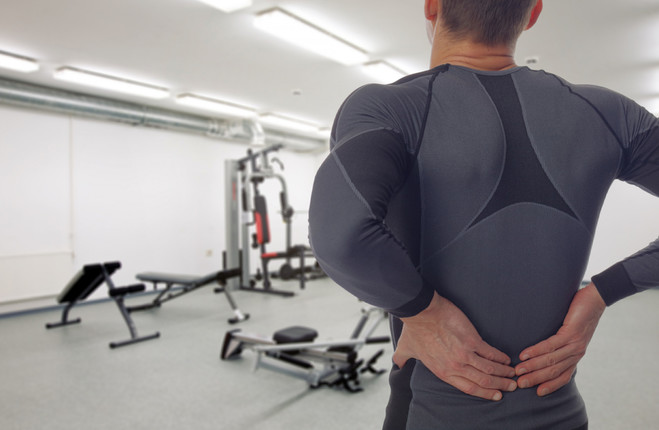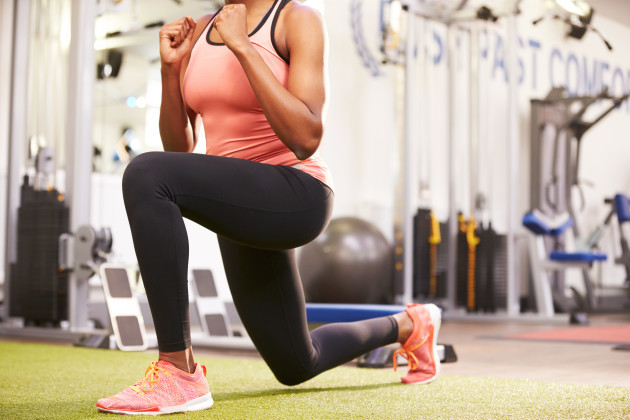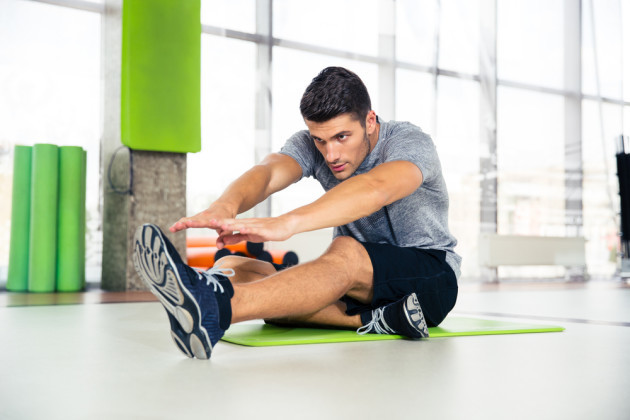HAVE YOU EVER walked into a gym and seen the older guy in the corner who wears the elbow/knee sleeves, the wrist wraps, the belt, and has approximately 7% of the full range of motion available to him on basically every exercise he performs?
I’m willing to bet that every gym has one of these guys and if you struck up a conversation with all of them the story would sound pretty similar: “I used to be able to…” or “when I was your age…” followed shortly by a series of anecdotes about how their shoulders don’t work anymore or their back is gone. Eventually you’ll wind up at the underlying cause — supposedly wear and tear is the issue, and its unavoidable apparently.
Well, no.
Wear and tear on muscles, ligaments, and joints happens but by training smart you can avoid it making you an immobile fossil for the last quarter of your life. And here’s how:
Warm Up
“Oh god really Dean? You’re on about warming up again?” I hear you say. While I do love nothing more than a god rant on how no one warms up properly it bears repeating multiple times over due to the fact that NO ONE WARMS UP PROPERLY.
Check out my previous article on warming up here.
How will warming up help you avoid having the future mobility of a clam? A good warm up will increase blood flow to working muscles which help to avoid cramps, strains, and tears. A good warm up will also mobilise your joints to allow a smooth full range of motion in every exercise you attempt. A good warm up will also prime your body to complete complex movements which require an intricate series of muscular contractions and co contractions to perform optimally. A good warm up will make you more desirable to the opposite or same sex.
(That last part is 100% true, I just don’t think the readers of The42 are ready for it.)
Seriously, if you want to move well into your old age I suggest getting your head around a solid warm up routine which will raise your heart rate, activate your muscles, and mobilise your joints.
Vary Your Movements
One way to really mess up your joints is with an overuse injury, and one way to land yourself a tasty one of those is by always doing the same thing over and over again. Exercises such as bench presses and chin ups are great for building a meaty upper body, but done too often and with not enough variability in accessory movements can lead to cranky shoulders, elbows, and wrists.
Giving your body a break from the high stress demands of the big barbell exercises by spending some time working on dumbell, kettlebell and bodyweight variations can help to not only strengthen smaller stabiliser muscles and deload your aching joints, but also give your body a novel stimulus which can ensure you keep progressing in strength and hypertrophy.
As general advice I would tell trainees with cranky shoulders to avoid the barbell bench press in favour of pushup variations, before eventually reloading their joints via pressing variation where their scapula is free to move (landmine press, Turkish get ups), before eventually moving back to the bench with dumbells. This could be a two to three month process where muscle is built away from the barbell and progress is made such that by the time they get back to benching they’re doing so with a much stronger and more stable set of shoulders.
Similarly, a common occurrence with those who push hard on squats and deadlifts is lower back and/or hip issues as a result of the nature of loading a heavy bilateral exercise regularly. The mechanism of injury here is usually the amount of force which travels through the thoracolumbar fascia, that being the area in the lower back where the muscles of the hips meet the muscles of the lower and upper back. Regular loading of this area can lead to muscular strain or inflammation very before long.
My usual fix for a cranky lower back with a trainee is to get them working to load the lower body with unilateral exercises such as split squats, lunges, and step ups before slowly reintroducing bilateral loading in the form of goblet squats, front squats, RDLs, and trap bar deadlifts. By doing this we can take the pressure off the areas surrounding the thoracolumbar fascia and place it where we want it to go, namely the quads, glutes, and hamstrings. A surefire way to calm down a cranky lower back is spending some time away from the big bilaterals and teaching the body how to fire the muscles we really need to move serious weights.
Looking at these two examples, I hope it’s clear to see exactly why you need movement variability in your arsenal when it comes to exercise selection.
And finally, if you wanna keep moving like a boss long into your old age:
Don’t Ego Lift
There are so many things that become easier when you avoid ego lifting, but first let’s define our terms, what do we mean by ego lifting?
Compromising form for weight or repetitions, be that via diminished range of motion, less than controlled speed, or using an excessive amount of momentum or the aid of a spotter to move weights you cannot lift correctly.
The thing about ego lifting is that I could write an entire article about the things you miss out on when you ego lift — namely muscular size, strength, and the ability not to look like a blithering idiot.
However since this an article about longevity let’s keep this to the point; if you ego lift you put your muscles, joints, and connective tissues at higher risk for injury (as well as your pride) by virtue of the fact that you are more than likely moving weights you cannot control.
In an attempt to solve this pandemic, may I offer the following uber simple advice — if you can count to three by the time you eccentrically lower the weight through a full range of motion (in most exercises), then you are far less likely to be able to ego lift it… well you still could I guess but you would have to be doing a pretty epic job of ignoring all the signs that that weight is just too heavy.
That’s it, a really simple fix to a common problem, range of motion and monitoring tempo. It’s so simple it actually works.
Wrapping Up
The body you have is designed to last you about 100 years as long as you take care of it, and taking care of it is fortunately really simple. What do you need? An extra five minutes to warm up, a bit of time spent learning a few basic movement patterns (shoot me a mail if you need help with this), and checking your ego at the door before you go lift heavy things to ensure you stay within your limits while working to expand your comfort zone.
If you can do that much your reward will be a body that moves like a ninja forever!
Dean Merton is a Dublin-based strength coach and personal trainer. For more information you can follow him on Facebook and Instagram, or you can send him a direct message here.
You can also see some of his previous articles here.
Subscribe to The42 podcasts here:



